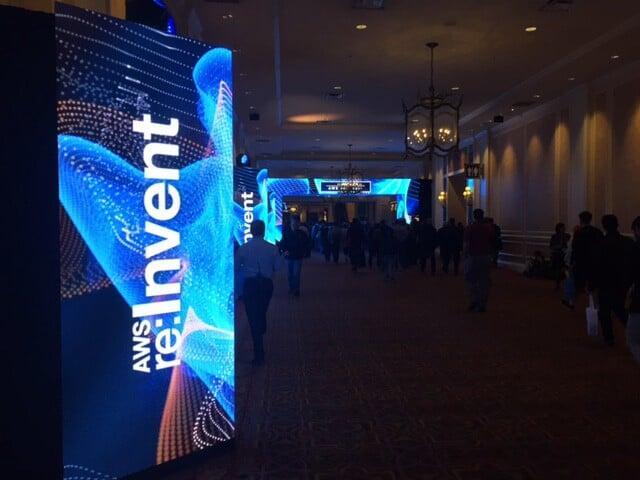
This past week I had the privilege of attending the Amazon Web Services re:Invent convention in Las Vegas. I walked away with a ton of new knowledge and three strong impressions:
- Amazon is reframing information technology in a way that doesn’t require the use of the Microsoft Windows operating system, PCs, or even servers.
- This new infrastructure is already here, enabling the services of othercompanies you know and use every day.
- Most people have no idea it’s happening.
Amazon Web Services (AWS) has been an important part of the Cloud-computing scene since 2006, when the online retailer launched s3 (a file-storage service) and EC2 (a service offering hosted virtual server instances.)
Since then, AWS has deployed scores of additional services, including:
- Relational Database Service (RDS): allowing customers to host enterprise-class databases in the Cloud using formats such as MS-SQL, MySQL, PostgreSQL, and Oracle, without maintaining their own physical or virtual database server.
- Lambda: giving customers the ability to run code using an engine hosted and managed by AWS, instead of on their own server.
- Lex: artificial intelligence running as a hosted service, making it possible for customers to include automatic speech recognition and natural language understanding in their software applications and devices.
These are just a few from an array of services AWS has created (and continues to create) to support its Cloud infrastructure. You may notice a common characteristic across the three services I have described — none of them requires the customer to build, deploy or maintain a server.
AWS regularly utilizes a particular term for this: “serverless architecture” — and customers appear to be embracing it.
If there was a common refrain at re:Invent, it was “Data centers are a pain. Data centers are expensive. We were so happy the day we shut down our datacenter.”
Datacenters, however, aren’t the only source of pain. Taking care of servers is painful, as well. All throughout the convention we heard from AWS customers who have rewritten their business-critical applications to utilize the hosted compute services at AWS. These customers aren’t just moving their servers into the Cloud — they are getting rid of many of their servers entirely.
This process may herald an end to the long-established dependence of the business community on Microsoft Windows and the PC. When developers rewrite applications, they often recreate them for the browser, not for a particular computer operating system. When they do write for an OS, it’s likely to be iOS or Android, rather than Windows. For those who need to stay within the Windows fold, AWS offers the WorkSpaces and AppStreamservices, giving the customers the option of moving their workstations and applications into the Cloud.
How does this affect you? Many consumer services you already use are powered by this new infrastructure. I heard presentations, among many others, from Netflix, Johnson & Johnson, and McDonalds — all describing their deep integration with the Cloud environment at AWS.
Most of the sessions I attended also touched in some way on the Amazon Echo and the Alexa Voice Service behind it. The presenters made it clear that Amazon doesn’t consider the Echo a consumer novelty. Rather it is a “reference device”, showing other manufacturers how to design for a new user interface to tap into the computing resources at AWS.
The most interesting take-away from the convention was the disconnect between what was happening there and the perspective of those who don’t realize the extent to which AWS is changing the game. I spent a week with thousands of people representing hundreds of companies all working very hard to make the current computing environment obsolete.
When I told non-attendees I was in town “for the Amazon convention,” they typically wanted to know if it was a conference for product vendors who sell on the retail site. Most of them had never heard of Amazon Web Services. What was happening at re:Invent was going on “behind-the-scenes”, and it may be some time before the scale of change becomes obvious to those outside the tech industry.
The effects, however, are already becoming apparent. My Uber driver asked several questions, curious what I meant when I referred to AWS. I motioned to the phone mounted on his dash and told him “You’re using it right now.” That may be all of us soon.


